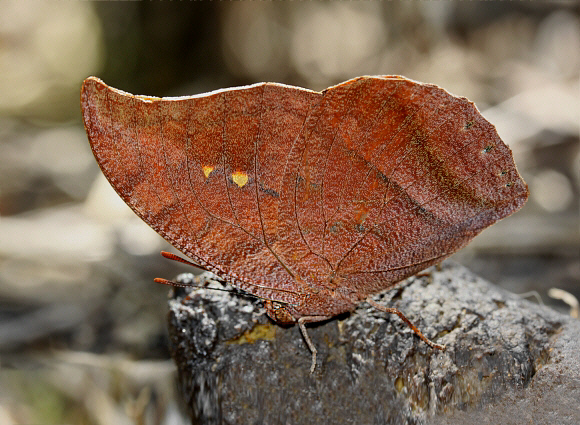 Polygrapha tyrianthina, Satipo, Peru – Dave Griffiths
Polygrapha tyrianthina, Satipo, Peru – Dave Griffiths
Introduction
The tribe Anaeini comprises of 87 neotropical species in the genera Coenophlebia, Consul, Anaea, Polygrapha, Memphis, Siderone, Fountainea and Zaretis. The butterflies are characterised by having a very rapid and strong flight. They have stout bodies, falcate wings, and on the upper surface are generally black, marked with bands of orange, bright red, or lustrous blue according to species. The undersides of all species in the Anaeini are cryptically patterned and bear a strong resemblance to the dead leaves, tree bark or boulders on which they settle.
There are 4 species in the genus Polygrapha, i.e. cyanea, suprema, tyrianthina and xenocrates. All have cryptic undersides which camouflage them effectively when they are at rest on tree trunks or on the ground among leaf litter. Males of tyrianthina are dark brown with a broad swathe of orange running across the forewings parallel with the costa, and narrow orange margins on the hindwings.
Polygrapha tyrianthina is found in Peru and Bolivia.
Habitats
This species occurs in rainforest at elevations between about 200-800m.
Lifecycle
To be completed.
Adult behaviour
The adults spend most of their lives in the upper canopy. Males however can be attracted to rotting fruit or carrion on the forest floor. The wings are always kept tightly closed when the butterflies are feeding. If disturbed they fly up onto nearby understorey foliage.
